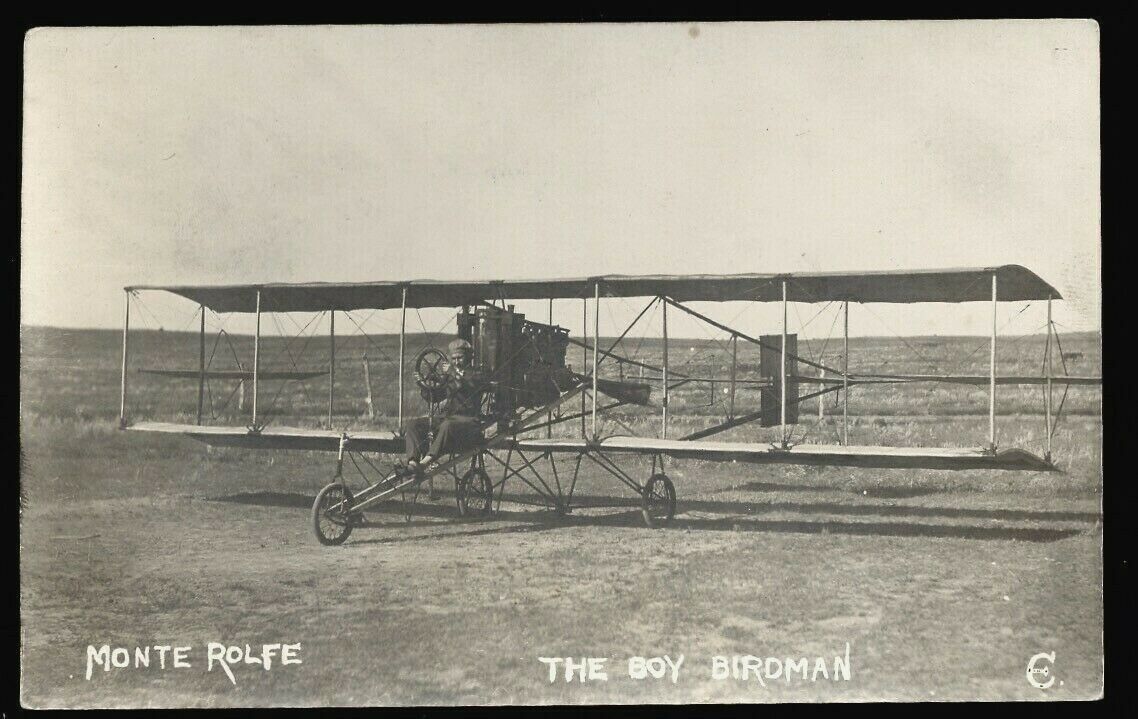Before Lindbergh
When Charles Lindbergh came to Montana in 1922 as an unknown member of a barnstorming group, he was far from the first airborne daredevil to dazzle Treasure State audiences. More than a dozen early aviators, including balloonists, had already blazed the state’s big sky, its mountains, valleys, and plains. Also, in the just-ended Great War, as World War I was originally called, eighty Montanans had served in the Army Air Service.
In the pages that follow, a spotlight will shine on some of the early-day air pioneers who chose Montana as the place to practice their aerobatics. This narrative will mention several who gave their lives in what was then a risky pursuit. Those whose brief stories will follow include:
· Monte Rolfe
· Otto Timm
· Katherine Stinson
· Frank Bell
· Clifford B. Prodger
· Terah T. Maroney
· R. C. “Lucky Bob” St. Henry
· Cromwell Dixon
· Lt. George E. M. Kelly
· J. C. “Bud” Mars
· Eugene Ely
· B. C. McClellan
· George Lowry
· Ruby Deveau Owen
· T. C. Benbow
- Samuel F. Cody
Monte Rolfe
Monte Rolfe, called the “Boy Birdman,” flew at fairs in southeastern Montana in the years before the U.S. entered the Great War in 1918. Rolfe, of English descent, was a son of L. R. Wolfe who came to Baker and had interests in a floor mill and grain elevator there.

One of Monte Rolfe's first exhibitions came at the 1915 Custer County Fair in miles City. A Baker Sentinel report (September 10, 1915) said the “daring young aviator” displayed his aerobatic skills to about 1,500 spectators. Rolfe made two flights during the Thursday afternoon opening-day show.
“It was shortly after 2 o’clock when he seated himself in his biplane and a minute later like a swift bird flying bird he was far beyond the Northern Pacific tracks waving his hands in the air (as) a greeting to the hundreds of people in the grandstand and bleachers.”
Wen Rolfe reached a point on the Tongue River south of Miles City, he made a quick, graceful turn and then swooped over the grandstand and the racetrack. He flew on to Main Street, making several dips over the road.
“It was a spectacular flight” as Rolfe buzzed back and forth to the huzzahs of spectators cheering and waving hands, hats and handkerchiefs. Rolfe smiled and “waved his hands freely in the air, letting his flying machine have its own freedom for as much as a half a minute at a time.”
The Sentinel said Rolfe made a “tremendous hit” with his flying ability and his knack for entertaining people. The newspaper said no Montana fair had been graced with a “more willing aviator,” someone whose “clever flying” captured the hearts of Montanans.
Rolfe, like many early day fliers, experienced his share of accidents and even tragedy. Flying in Baton Rouge, Louisiana (Baker Sentinel, October 22, 1915), he was descending when his plane hit a tree and broke up. Rolfe reportedly wasn't injured. A bit later, Rolfe again crashed in southern California, resulting in the destruction of his biplane. This time, he was seriously injured. (Baker Sentinel, January 26, 1917).
The daring young Englishman flew in the Great War — it's not clear whether for Great Britain or the U.S. — and continued flying after the 1918 Armistice. He tasted tragedy in Florida. By then living in Augusta, Georgia, Rolfe piloted a plane that crashed while trying to land on the beach at Pablo Beach. The crash killed his passenger, a 70-year- old woman from Ohio. (Ekalaka Eagle and Beaver Valley Press, March 18, 1921).
Wolfe reportedly died in a plane crash in 1921, either in Havana or Evansville, Indiana.